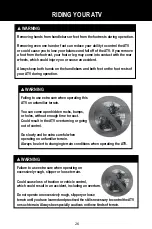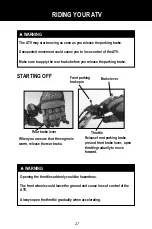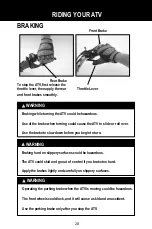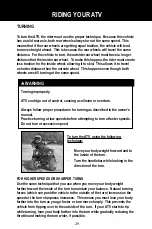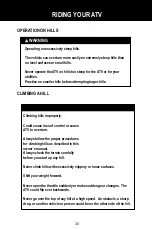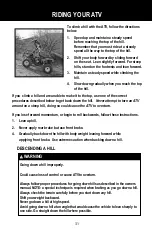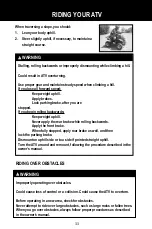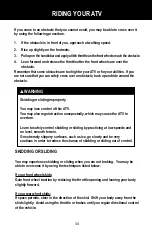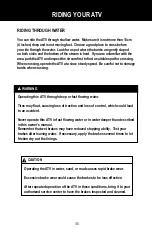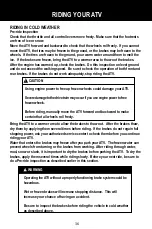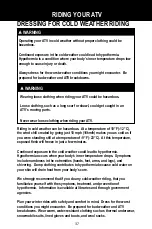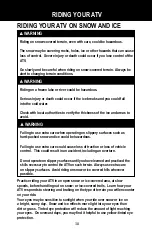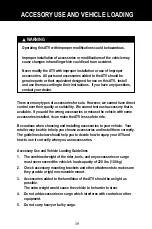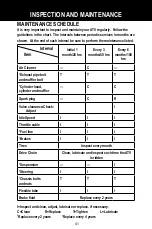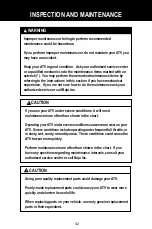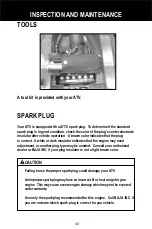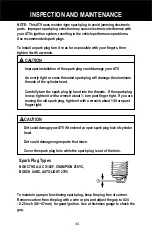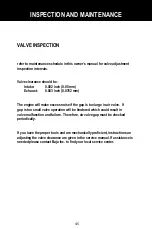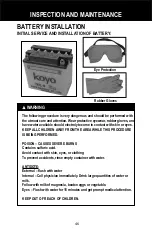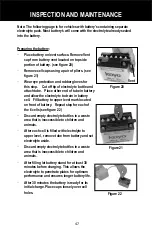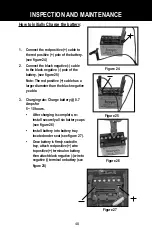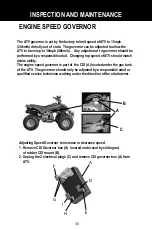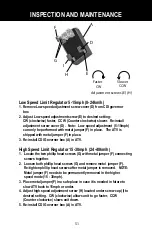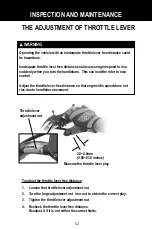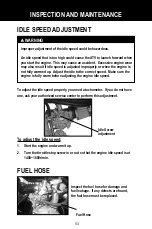
38
RIDING YOUR ATV ON SNOW AND ICE
Practice riding your ATV in an open snow- or ice-covered area, at slow
speeds, before handling out on snow- or ice-covered trails. Learn how your
ATV responds to steering and braking on the type of terrain you will encounter
on your ride.
Your eyes may be sensitive to sunlight when you ride over snow or ice on
a bright, sunny day. Snow and ice reflects more light into your eyes than
dirt or grass. Tinted eye protection will reduce the amount of light reaching
your eyes. On overcast days, you may find it helpful to use yellow-tinted eye
protection.
WARNING
Riding on snow-covered terrain, even with care, could be hazardous.
The snow may be covering rocks, holes, ice or other hazards that can cause
loss of control. Severe injury or death could occur if you lose control of the
ATV.
Go slowly and be careful when riding on snow-covered terrain. Always be
alert to changing terrain conditions.
WARNING
Riding on a frozen lake or river could be hazardous.
Serious injury or death could occur if the ice breaks and you could fall
into the cold water.
Check with local authorities to verify the thickness of the ice and areas to
avoid.
WARNING
Failing to use extra care when operating on slippery surfaces such as
hard-packed snow and ice could be hazardous.
Failing to use extra care could cause loss of traction or loss of vehicle
control. This could result in an accident, including an overturn.
Do not operate on slippery surfaces until you have learned and practiced the
skills necessary to control the ATV on such terrain. Always use extra care
on slippery surfaces. Avoid riding on snow or ice covered hills whenever
possible.
RIDING YOUR ATV



